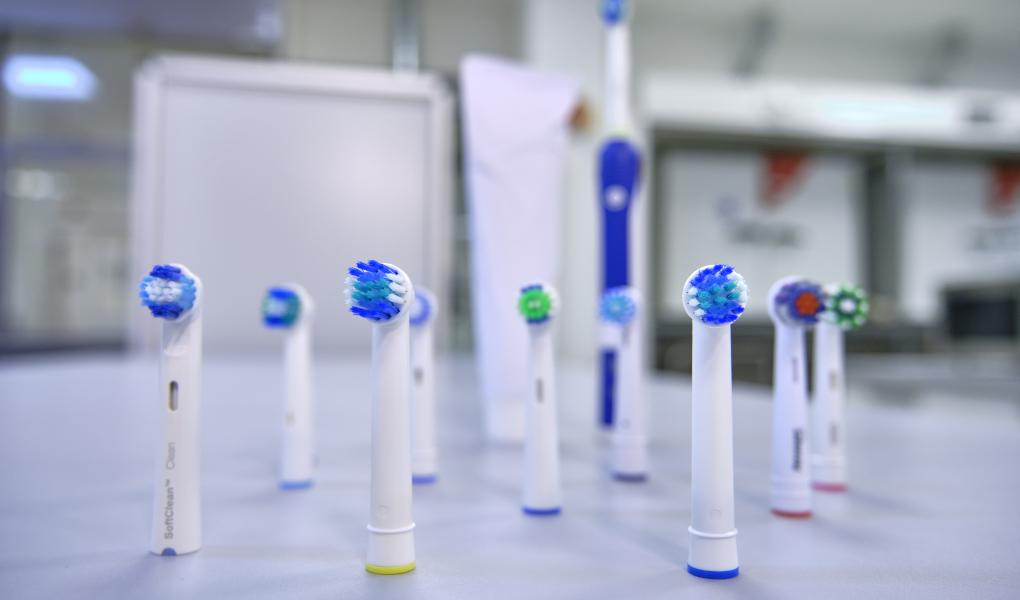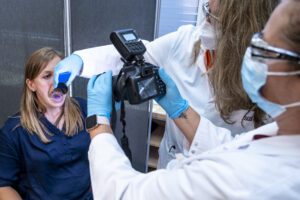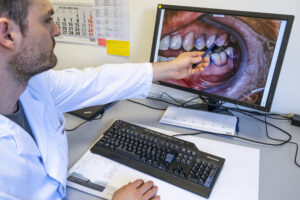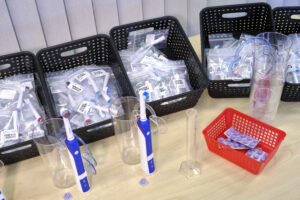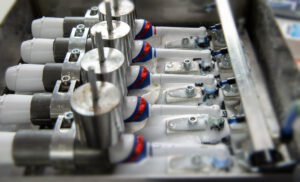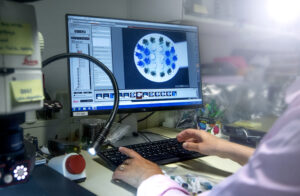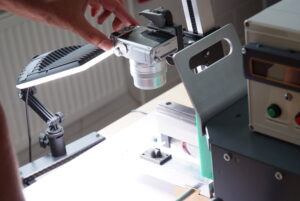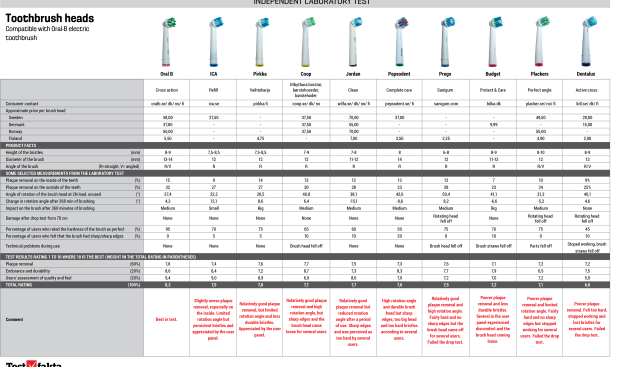How well do the copies compare to the original from Oral-B? Testfakta Research has tested and compared ten compatible brush heads on the Nordic market. All are more or less identical in appearance, but the test shows big differences in quality, feel and performance.
Ink cartridges, vacuum cleaner bags and now brush heads for electric toothbrushes. If you have an Oral-B electric toothbrush, you can today choose between several brands of compatible brush heads - all with the same rotating brush technology as the original head.
Is there any difference between the different makes? Do they brush as clean and last as long? To find out, Testfakta Research, on behalf of Procter & Gamble, tested ten different brush heads for Oral-B electric toothbrushes on the Nordic market.
The tests have been carried out in three different laboratories and include everything from the ability to brush away plaque to technical tests of the endurance of the bristles and the angle of rotation of the brush head.
[PDF]
The most important part, of course, is how good they are at removing plaque. To find out, 40 subjects were recruited who together completed 200 test brushings in the laboratory. The amount of plaque before and after brushing was documented with high-resolution images that were then assessed by the laboratory's dentist. The level of plaque was assessed individually for each tooth and tooth side, before and after brushing.
— This was a very extensive and demanding test where we took more than 3,600 images which were then sent on for analysis by our specialists in France, says Dr. Ines Sellami at SGS Institut Fresenius who conducted the clinical study. The result for each brush head is based on an assessment of nearly 1,800 teeth and tooth sides. What conclusions can be drawn from the results – was there any difference in plaque removal?
— The differences between the different variants were smaller than expected, perhaps due to the fact that they all use the same rotating brush technology. But you can still see a significant difference between the best and worst heads in the test, says Dr. Ines Sellami. Oral-B has the best plaque removal, which removes more than twice as much plaque on the inside of the teeth compared to the worst in the test - Danish Budget. On the outside, the differences are smaller with 32 percent for Oral-B compared to 23 percent for the worst - Danish Budget and Pepsodent. According to the manufacturers, you should change the brush head every three months, which is equivalent to six hours of brushing, if you brush four minutes a day. At RISE laboratories in Mölndal, they tested how the brushes were affected after a period of use. All brush heads had to move with a certain pressure against a tooth profile, both straight from above and at a 45° angle.
Pepsodent and Jordan were visibly affected after 360 minutes of brushing, but the hardness changed more or less for all brush heads. The rotating movement of the brush head is important for cleaning the teeth. At the PZT laboratory in Germany, the so-called rotation angle was measured - how many degrees to the right and left the head rotates. Since it makes close to 8,000 movements per minute, a high-speed camera was used to measure the angle.
— For Pirkka, ICA and Jordan, you could see a big difference in rotation angle after a period of use, which indicates a lower quality and endurance in the mechanism, says Thorsten Kutzner, responsible test operator at PZT. Perhaps most important of all is how it feels to brush with the different variants. To find out, 200 people (20 per brand) used the different brush heads for four weeks and then answered questions about comfort, any discomfort, pain or bleeding in the gums, hardness of the brush head, technical problems, cleaning ability and access to all teeth.
— How one experiences the brush head is highly individual and this is also noticeable in the users' assessment. However, some brush heads broke or detached from the handle which is quite remarkable, says Dr. Ines Sellami.
— Two brush heads stand out in the user assessment. On the positive side Oral-B which got good reviews from most of the users and on the negative Dentalux which both broke and got low reviews from the panel. Overall, the best result in the test goes to the original head from Oral-B. Then there are considerably cheaper alternatives, but based on the test results, you should probably avoid the cheapest ones.
Testfakta Research August 2022

